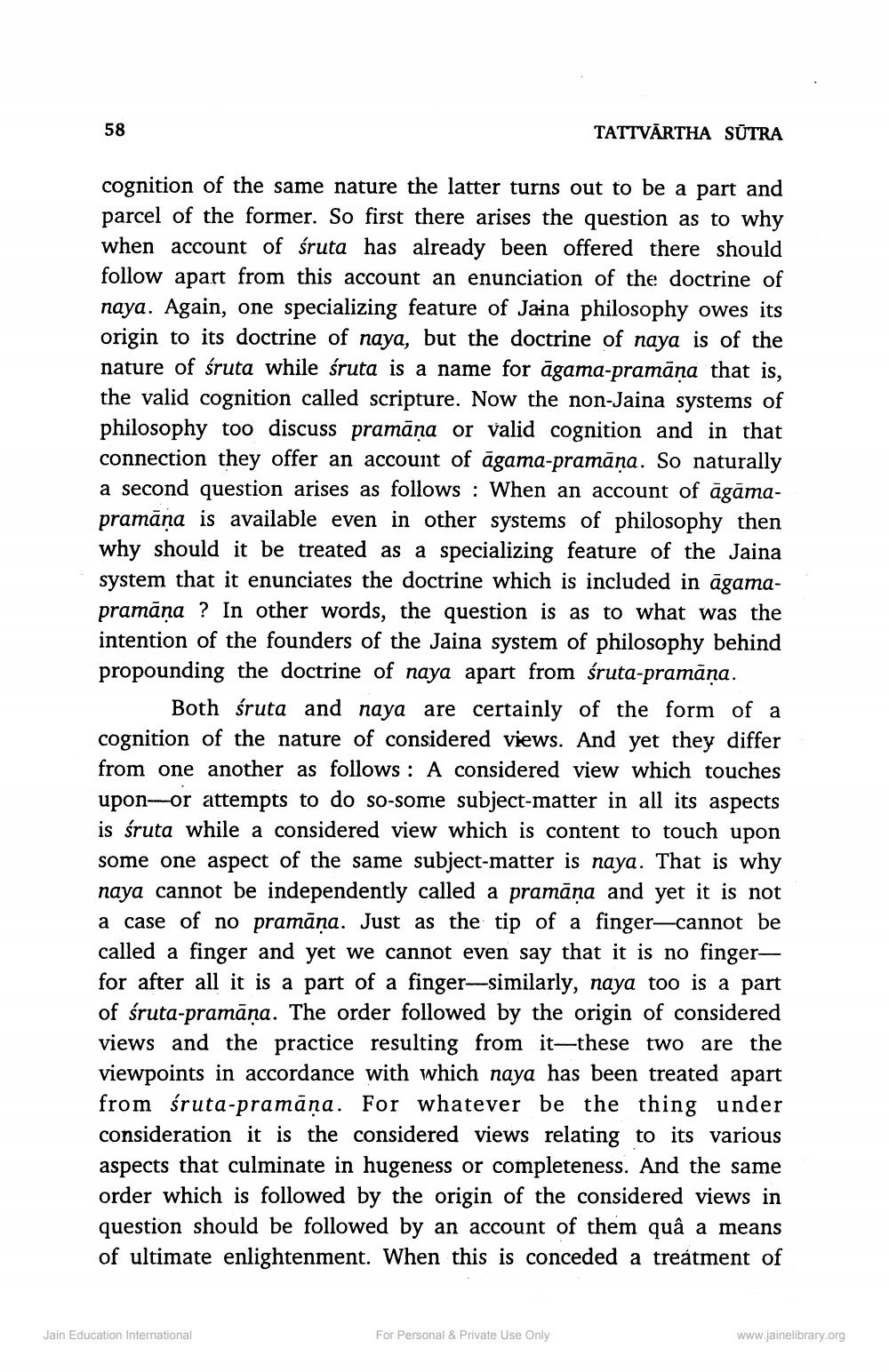________________
58
TATTVĀRTHA SŪTRA
cognition of the same nature the latter turns out to be a part and parcel of the former. So first there arises the question as to why when account of śruta has already been offered there should follow apart from this account an enunciation of the doctrine of naya. Again, one specializing feature of Jaina philosophy owes its origin to its doctrine of naya, but the doctrine of naya is of the nature of śruta while śruta is a name for āgama-pramāna that is, the valid cognition called scripture. Now the non-Jaina systems of philosophy too discuss pramāņa or valid cognition and in that connection they offer an account of agama-pramāņa. So naturally a second question arises as follows : When an account of agamapramāna is available even in other systems of philosophy then why should it be treated as a specializing feature of the Jaina system that it enunciates the doctrine which is included in āgamapramāņa ? In other words, the question is as to what was the intention of the founders of the Jaina system of philosophy behind propounding the doctrine of naya apart from śruta-pramāņa.
Both śruta and naya are certainly of the form of a cognition of the nature of considered views. And yet they differ from one another as follows: A considered view which touches upon-or attempts to do so-some subject-matter in all its aspects is śruta while a considered view which is content to touch upon some one aspect of the same subject-matter is naya. That is why naya cannot be independently called a pramāna and yet it is not a case of no pramāna. Just as the tip of a finger-cannot be called a finger and yet we cannot even say that it is no fingerfor after all it is a part of a finger-similarly, naya too is a part of śruta-pramāna. The order followed by the origin of considered views and the practice resulting from it—these two are the viewpoints in accordance with which naya has been treated apart from śruta-pramāņa. For whatever be the thing under consideration it is the considered views relating to its various aspects that culminate in hugeness or completeness. And the same order which is followed by the origin of the considered views in question should be followed by an account of them quâ a means of ultimate enlightenment. When this is conceded a treatment of
Jain Education International
For Personal & Private Use Only
www.jainelibrary.org




